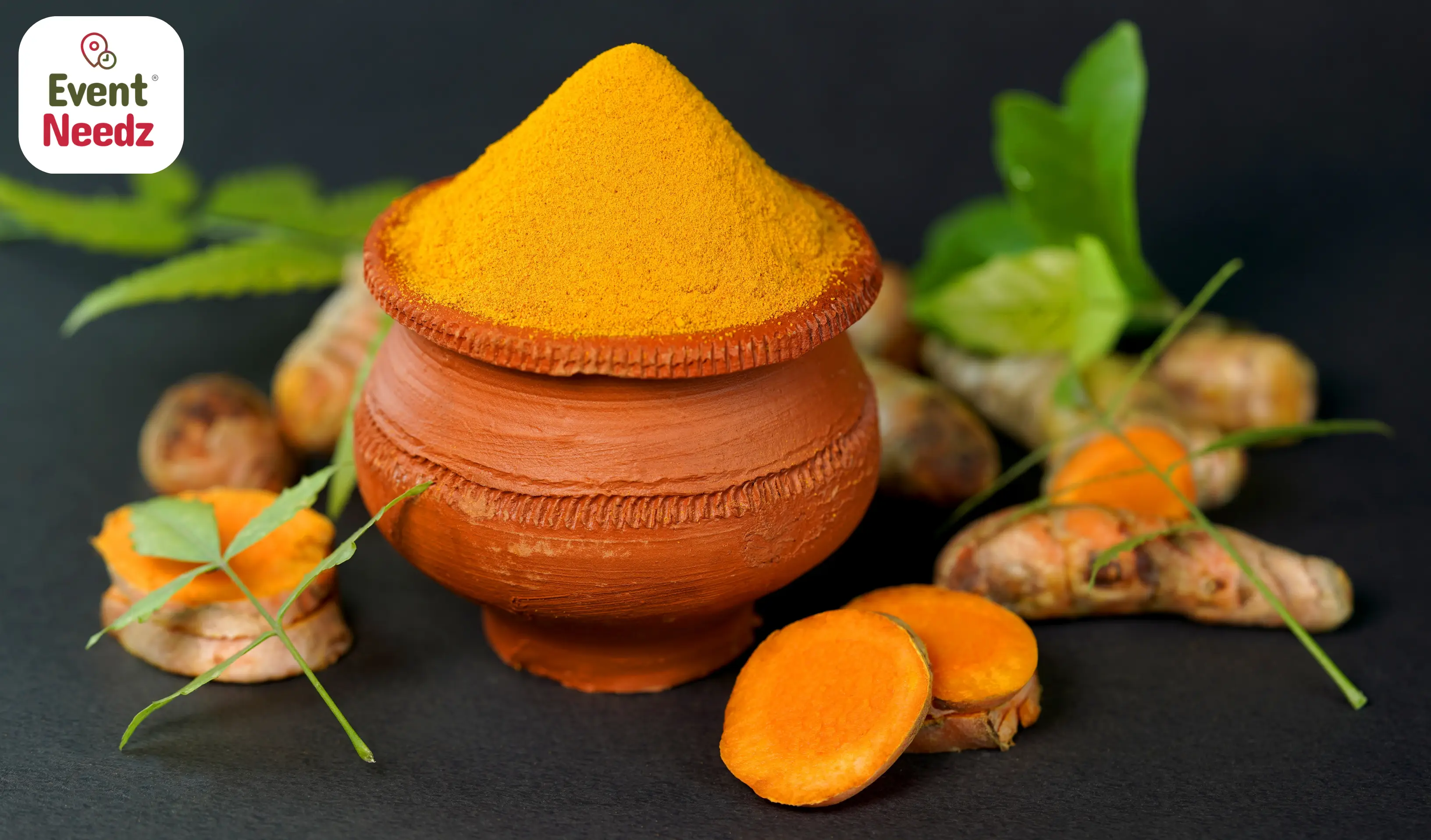
Forgot Password
Don’t Worry
Just enter your mobile number associated with your account. We’ll send you a verification code to reset your password.
Download Our Apps
Enhance your business or find event-related information effortlessly — download our Free to use App for a seamless and convenient experience.
CUSTOMER APP
BUSINESS APP

Watch Video
Glimpse of what Event Needz can do for you.

Select Your Location
Terms & Conditions
- Event Needz does not claim any ownership rights in the text, files, images, photos, video, sounds, musical works, works of authorship, or any other materials (collectively, "User Content") that you upload to, submit to, or embed on the Event Needz platform; except for the content created in collaboration with the Event Needz team for its own events/ perusal. In such cases, the same will be specified while creating the content in question.
- You represent and warrant that you own the User Content posted by you on or through the Event Needz Services, or that you otherwise have sufficient right, title and interest in and to such User Content to grant Event Needz the licenses and rights set forth below without violating, infringing or misappropriating the privacy rights, publicity rights, copyrights, contract rights, intellectual property rights or any other rights of any person. You agree to pay for all royalties, fees, and any other monies owing any person by reason of any User Content posted by you to or through the Event Needz Services. Event Needz shall not be liable for any violation of Copyright or any other Intellectual Property or other rights being violated in any manner whatsoever and the User/Vendor posting the same shall be liable.
- After posting, uploading or embedding User Content to the Event Needz Services, you continue to retain such rights in such User Content as you held prior to posting such User Content on the Event Needz Services and you continue to have the right to use your User Content in any way you choose. However, by displaying or publishing ("posting") any User Content on or through the Event Needz Services, you hereby grant to Event Needz a non-exclusive, royalty-free, transferable, sublicensable, worldwide license to use, display, reproduce, adapt, modify (e.g., re-format), rearrange, and distribute your User Content through any media now known or developed in the future. Photographs used on the Event Needz Services on in any Event Needz publication will include attribution to the photographer and/or copyright holder. Event Needz holds the right to remove any User content posted by you on the website in the event that Event Needz finds such content to be violative, inappropriate or worthy of being removed in any manner whatsoever and shall not be held liable for the same.
- Without this license, Event Needz would be unable to provide the Event Needz or its publications. For example, the license you grant to Event Needz is non-exclusive (meaning you are free to license your Content to anyone else in addition to Event Needz), fully-paid and royalty-free (meaning that Event Needz is not required to pay you for the use of the User Content that you post), sublicensable (so that Event Needz is able to use its affiliates and subcontractors such as Internet content delivery networks to provide the Event Needz), and worldwide (because the Internet and the Event Needz are global in reach).
- This license will terminate at the time you remove your User Content from the Event Needz Services except as to any User Content that Event Needz has sublicensed prior to your removal of your User Content from the Event Needz Services, which license shall continue in perpetuity. To remove User Content, please send a request to info@eventneedz.com and include a brief description of the item(s) to be removed along with a URL of the item(s) current location on the Event Needz Website. We will remove the item(s) as quickly as possible. In the event that Event Needz uses the Vendor’s content on its website it shall do so while giving credit to the Vendor.
- Event Needz does not take liability to ensure protection of the content posted on the website/platform. In the event that the Vendor posts content on the website and the same is infringed by another Vendor or any other third party, it shall not be the liability of Event Needz. We attempt to prevent such copying and infringement by applying our watermark on the content wherever possible, but take no responsibility to further protect the content.
- Using the Event Needz platform, users acknowledge that they are solely visiting to obtain information about vendors, and any bookings made are independent of Event Needz. Therefore, Event Needz cannot be held liable for any issues with the vendor or the booking. Users agree that all transactions occur directly between themselves and the vendor, and Event Needz is not involved in any way.
- Notwithstanding the foregoing, Event Needz reserves the power to restrict, totally or partially, the access of specific users and to cancel, suspend, block, edit, or delete particular types of content or cancel the accounts of users who misuse the Website or if Event Needz acquires actual knowledge that the activity or stored information is unlawful or harms property or rights of another, using suitable technological tools for this purpose, In this regard, Event Needz may set up the necessary filters to prevent illegal or harmful content used for purposes contrary to the websites purpose spilling into the network through the service.
- If a customer chooses to share their content and photographs with Event Needz to be featured on the platform, they retain ownership of such content. However, by sharing it with Event Needz, they are allowing it to be reused and reposted by Event Needz.While Event Needz will strive to ensure a smooth and hassle-free customer experience, it does not accept any liability or responsibility to guarantee such an outcome.
- The Event Needz Services contain Content owned by Event Needz ("Event Needz Content"). Event Needz Content is protected by copyright, trademark, patent, trade secret and other laws, and Event Needz owns and retains all rights in the Event Needz Content and the Event Needz Services. Event Needz hereby grants you a limited, revocable, non-sublicensable license to view the Event Needz Content (excluding any software code) solely for your personal use in connection with viewing the Event Needz Website and using the Event Needz Services. Without limiting the generality of the foregoing, you agree that you shall not copy, modify, translate, publish, broadcast, transmit, license, sublicense, assign, distribute, perform, display, or sell any Event Needz Content appearing on or through the Event Needz Services
- The Event Needz Services contain Content of other Users and other Event Needz licensors ("Third Party Content") and you are permitted to access the Third Party Content solely for your personal use in connection with viewing the Event Needz Website and using the Event Needz Services. Without limiting the generality of the foregoing, you agree that you shall not copy, modify, translate, publish, broadcast, transmit, license, sublicense, assign, distribute, perform, display, or sell any Third Party Content appearing on or through the Event Needz Services. In the event that any User is found to be in violation of another person’s Intellectual Property or any other rights in any manner, they shall be absolutely and solely liable and no liability shall be laid down on Event Needz for the same.
- Content that criticizes a business or individual beyond that of merely offering an opinion
- Content that harasses or advocates harassment of another person
- Content that exploits people in a sexual or violent manner
- Content that contains nudity, violence, or offensive subject matter or contains a link to an adult website
- Content that includes racially, ethically, or otherwise objectionable language.
- Content that is libelous, defamatory, or otherwise tortious language
- Content that solicits personal information from anyone under 18
- Content that promotes information that you know is false or misleading or promotes illegal activities or conduct that is abusive, threatening, obscene, defamatory, or libelous
- Content that promotes an illegal or unauthorized copy of another person’s copyrighted work, such as providing pirated computer programs or links to them, providing information to circumvent manufacture-installed copy-protect devices, or providing pirated music or links to pirated music files
- Content that involves the transmission of "junk mail," "chain letters," or unsolicited mass mailing, instant messaging, "spimming," or "spamming"
- Content that contains restricted or password only access pages or hidden pages or images (those not linked to or from another accessible page
- Content that furthers or promotes any criminal activity or enterprise or provides instructional information about illegal activities including, but not limited to making or buying illegal weapons, violating someone’s privacy, or providing or creating computer viruses
- Content that solicits passwords or personal identifying information for commercial or unlawful purposes from other Users
- Content that is owned, created, or belongs to a third party and the entity posting/publishing such content has no authority to do so
- Content that involves commercial activities and/or sales without our prior written consent such as contests, sweepstakes, barter, advertising, or pyramid schemes
- copying, modifying, translating, publishing, broadcasting, transmitting, licensing, sublicensing, assigning, distributing, performing, publicly displaying, or selling any Third Party Content or Event Needz Content appearing on or through the Event Needz Services
- criminal or tortious activity, including child pornography, fraud, trafficking in obscene material, drug dealing, gambling, harassment, stalking, spamming, spimming, sending of viruses or other harmful files, copyright infringement, patent infringement, or theft of trade secrets
- covering or obscuring the banner advertisements on your personal profile page, or any Event Needz page via HTML/CSS or any other means
- any automated use of the system, such as using scripts to add friends or send comments or messages
- interfering with, disrupting, or creating an undue burden on the Event Needz Services or the networks or services connected to the Event Needz Services
- attempting to impersonate another User, person, or representative of Event Needz using the account, username, or password of another User at any time or disclosing your password to any third party or permitting any third party to access your account
- selling or otherwise transferring your profile, without our permission
- using any information obtained from the Event Needz Services in order to harass, abuse, or harm another person
- displaying an advertisement on your profile, or accepting payment or anything of value from a third person in exchange for your performing any commercial activity on or through the Event Needz Services on behalf of that person, such as placing commercial content on your profile, posting blogs or bulletins with a commercial purpose, or sending private messages with a commercial purpose
- using the Event Needz Services in a manner inconsistent with any and all applicable laws and regulations

Forgot Password
Don’t Worry
Just enter your mobile number associated with your account. We’ll send you a verification code to reset your password.

Advertisement


Team @ EventNeedz
Turmeric the Golden Spice of India

Turmeric (Curcuma longa) is a herbaceous plant from the ginger family and is native to India and Southeast Asia. It has been used in traditional Indian Ayurvedic medicine for thousands of years to treat various ailments due to its anti-inflammatory and antioxidant properties.
Turmeric's use in Indian customs and rituals dates back to ancient times. It has been mentioned in various Hindu scriptures and is considered a sacred and auspicious herb. In Hindu mythology, turmeric is believed to be the essence of the sun. It is associated with purity, fertility, and prosperity.
Over time, turmeric became an integral part of Indian culture and customs, including weddings, where it is used in the Haldi ceremony and other religious ceremonies. It is also used as a spice in Indian cuisine. It is known for giving dishes a distinct yellow color and a unique flavor.
Turmeric's popularity has grown beyond India. Today, it is widely used in many parts of the world for its health benefits and culinary uses.
Turmeric has been traditionally considered an auspicious and sacred herb in Indian culture.
In Indian weddings, Turmeric is used in the "Haldi Ceremony," typically held one or two days before the wedding day. In this ceremony, family members and friends apply a paste made of turmeric, sandalwood, rose water, and other natural ingredients to the bride and groom's face, hands, and feet.
The application of the turmeric paste is believed to ward off any evil spirits, bring good luck, and bless the couple with healthy and glowing skin. The Haldi ceremony is also a way for the bride and groom to relax and rejuvenate before the wedding day. It is often accompanied by music, dancing, and traditional food.
In Hindu tradition, turmeric is considered a sacred and auspicious herb used in various customs and rituals. Besides its use in the Haldi ceremony during weddings, it is also used in other religious traditions and festivals. For example, turmeric is used to make a paste called "tilak," which is applied to the forehead during prayers and religious ceremonies. It is also used in Hindu wedding rituals like Kanyadaan and Griha Pravesh, where turmeric is sprinkled on the bride and groom.
In Muslim tradition, turmeric is used primarily for its medicinal and culinary properties. It is used in traditional medicine for its anti-inflammatory and antiseptic properties and is believed to have healing properties. In culinary dishes, turmeric is used as a spice, including biryani, kebabs, and curries. Turmeric is also used to prepare a special milk-based drink called "Haldi Doodh" or "Golden Milk," which is believed to have many health benefits.
While turmeric is used differently in Hindu and Muslim traditions, it is widely accepted and appreciated for its numerous health benefits and culinary uses across different communities and cultures in India.
India is known to be one of the world's largest producers and exporters of turmeric, and the country is known for its high-quality turmeric. India's central turmeric-producing states are Andhra Pradesh, Telangana, Tamil Nadu, Maharashtra, Odisha, and Karnataka. These states have favorable climatic conditions and fertile soil ideal for turmeric cultivation.
Turmeric is a perennial plant that takes around 7-10 months to mature, depending on the variety and growing conditions. Culturing turmeric begins with planting the rhizomes, which are the underground stems of the plant, in well-drained soil. The plant requires warm and humid conditions and regular watering to grow.
After about 6-7 months of cultivation, the turmeric plant produces flowers, which signal that the rhizomes are ready for harvest. The rhizomes are carefully dug up, washed, and dried in the sun before being processed and packed for sale.
Culturing turmeric is an essential source of income for many farmers in India, and spice plays a significant and vital role in the country's economy and cultural traditions.
Turmeric's significance in Indian culture and tradition goes beyond its culinary uses and health benefits. It is a herb that has been revered for centuries and has played an important role in weddings, religious ceremonies, and other cultural practices. With its bright yellow color and unique flavor, turmeric has become a symbol of Indian heritage and tradition, and its popularity continues to grow worldwide. Whether you're a foodie, health enthusiast, or curious about different cultures, turmeric is a spice worth exploring and savoring.

About
A blog is an online Article or informational website displaying information in reverse chronological order, with the latest posts appearing first, at the top. It is a platform where a writer or a group of writers share their views on an individual subject.

Advertisement

Connect with us
Finding the Perfect Wedding Garlands on Event Needz



